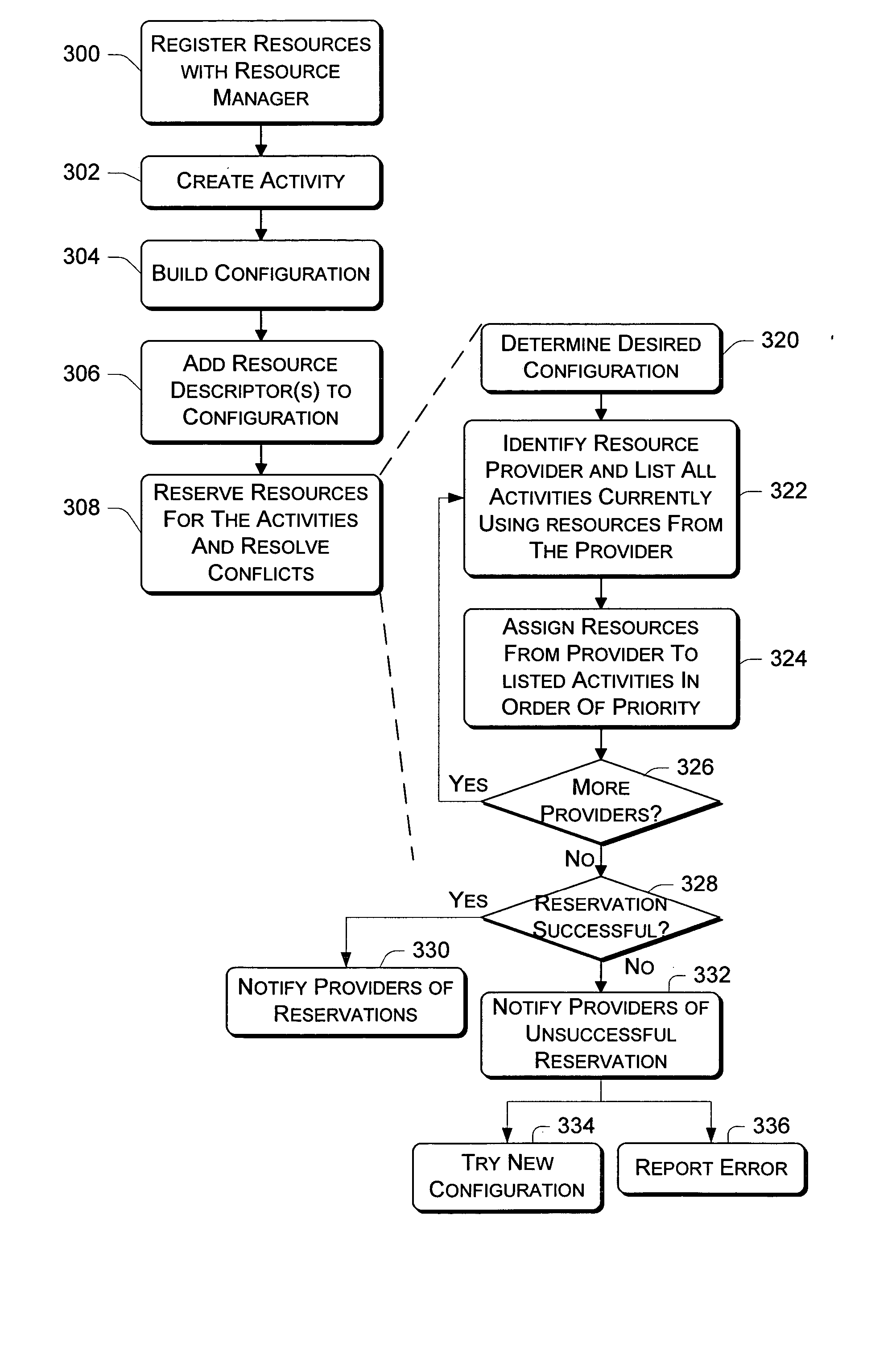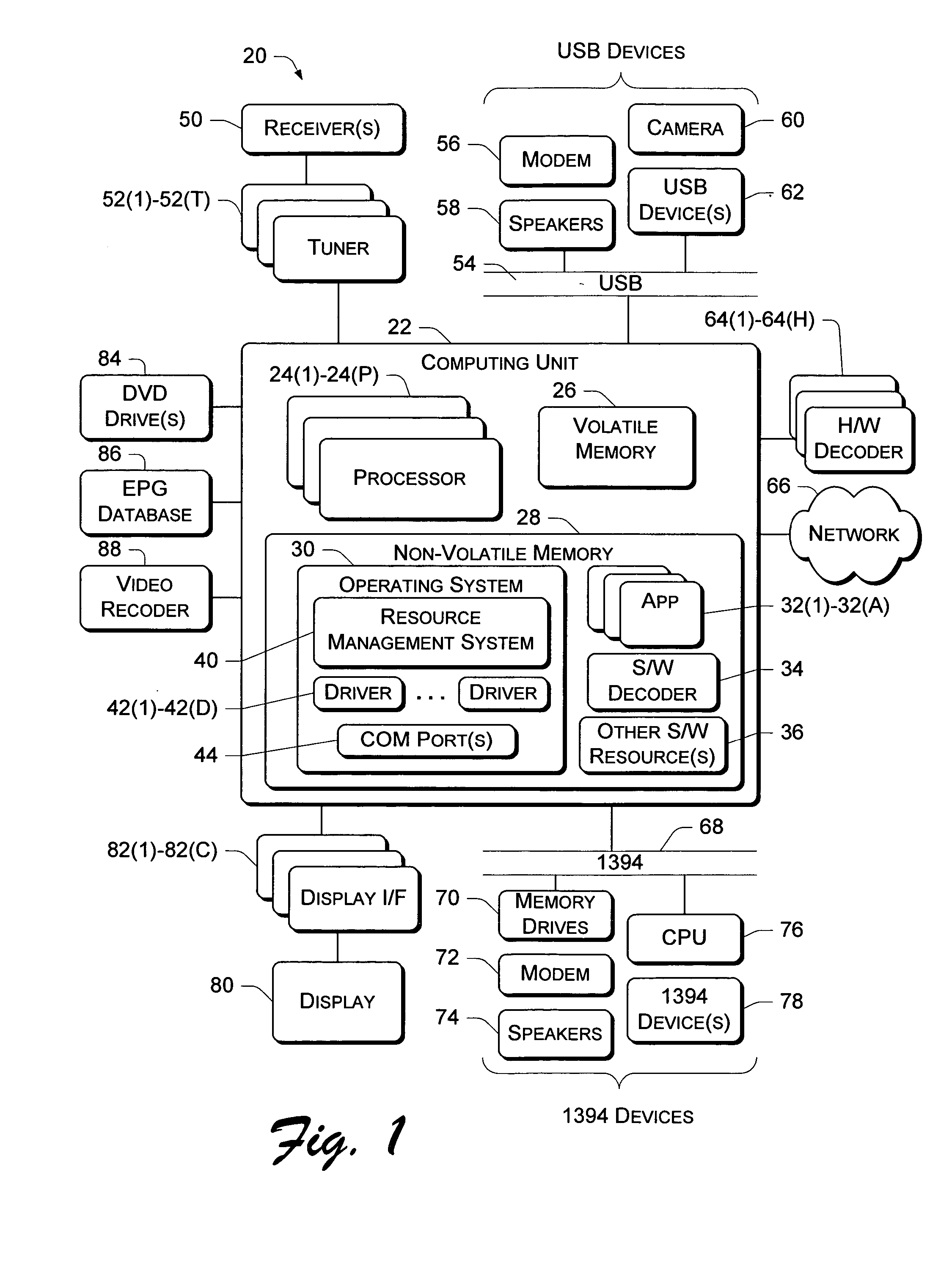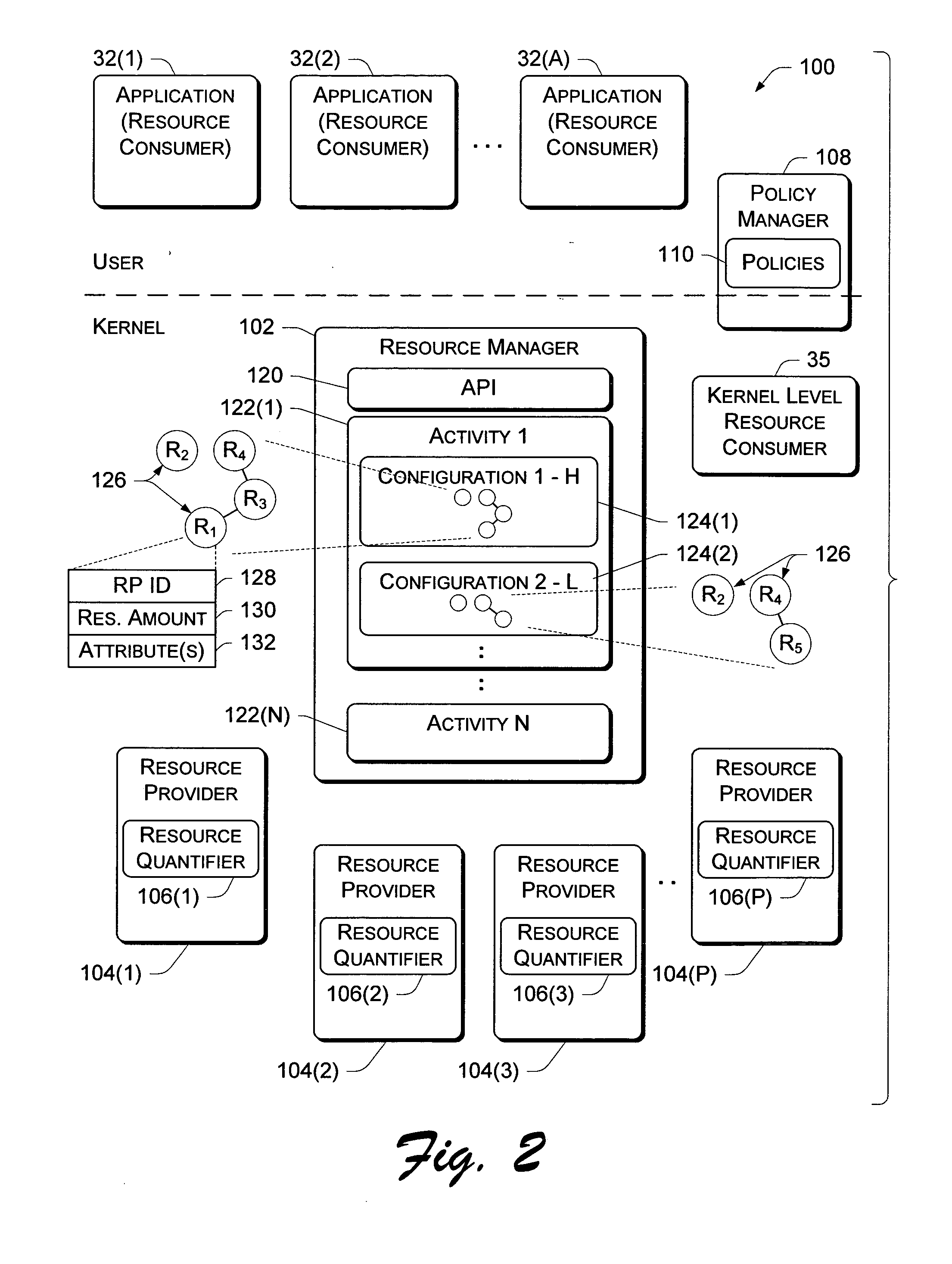Resource manager architecture
a resource manager and resource management technology, applied in the computer field, can solve the problems of not fully aware of a particular tuner, little care for how streaming content is received and displayed, and insufficient knowledge of resources, so as to facilitate resource reservation and error reporting, and improve error reporting efficiency
- Summary
- Abstract
- Description
- Claims
- Application Information
AI Technical Summary
Benefits of technology
Problems solved by technology
Method used
Image
Examples
Embodiment Construction
This disclosure describes a resource management architecture for managing resources in a computer system. A resource is a finite quantity of a computing component in the computer system that is utilized to perform various tasks or functions. Examples of resources include hardware devices, ports, CPU processing, memory, USB bandwidth, network bandwidth, software modules, and so forth. A resource may be a physical hardware quantity (e.g., CPU, USB bandwidth, network bandwidth) or an abstract quantity (e.g., virtual memory, audio volume).
Managing limited resources is becoming increasingly important as computer systems are asked to perform more tasks simultaneously, and for multiple users. Consider, for example, a TV-enabled computing system (e.g., broadcast PC, set-top box, etc.) that has a single TV tuner. There may be multiple processes that need to use the TV tuner in order to do their processing. For instance, a TV viewer application needs the TV tuner to provide a video stream ...
PUM
 Login to View More
Login to View More Abstract
Description
Claims
Application Information
 Login to View More
Login to View More - R&D
- Intellectual Property
- Life Sciences
- Materials
- Tech Scout
- Unparalleled Data Quality
- Higher Quality Content
- 60% Fewer Hallucinations
Browse by: Latest US Patents, China's latest patents, Technical Efficacy Thesaurus, Application Domain, Technology Topic, Popular Technical Reports.
© 2025 PatSnap. All rights reserved.Legal|Privacy policy|Modern Slavery Act Transparency Statement|Sitemap|About US| Contact US: help@patsnap.com



